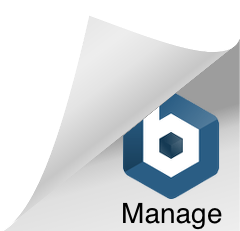
Have you ever sat in a business meeting and pretended to know about some “amazing new app” that’s mentioned? Or perhaps you’ve been at a dinner party where an inside joke or line from a film is quoted. You might have chuckled and played along… but as soon as you can sneak away or subtly use your phone, what’s the first thing you do?
Google it.
Everyone does it. The Internet is a powerful resource; when something new is introduced to us, the modern-day answer is to search online. What is it? Why is it important? Who is involved? How is it relevant?
Your potential buyers act the same way. Even when a recommendation comes from a reliable source, most consumers want to arm themselves with information and knowledge. In fact, Forrester reported last year that “74% of business buyers told us they conduct more than half of their research online before making an offline purchase.”
The ensuing questions for you are: what online content do you provide for information seekers? How can you ensure that your potential buyers find what they want? Do you know what messaging will convince them that your business has the right solution?
Besides having strong SEO and a social media presence (which are topics for another day), let’s focus on what content should be available on your website when potential buyers land there searching for information.
Here’s the good news: some basic “markers” exist in the Buyer’s Journey. (In case that term is new to you, the Buyer’s Journey refers to the path a buyer takes from first realizing he or she has a challenge, to the discovery of a potential solution, to the selection and purchase.)
For our purposes, we will look at the three pre-purchase stages when potential buyers are using online resources to learn about your business, products, and services before they engage directly with your sales team.
While you may see alternative terminology used to describe the stages of the Buyer’s Journey, the basic path during pre-purchase is the same:
Awareness, Education, Evaluation
You may be asking yourself, what are the differences between the stages? How can we provide the right resources for each? What content are buyers looking for?
Here’s the mixed news: with the ability to search online, the Buyer’s Journey has morphed into an individual experience. You can no longer control the step-by-step education of the buyer. The Wild West of the Internet means that buyers determine their own destiny. There isn’t a moment where someone says, “I’m still in the Awareness stage. Therefore, I should read analyst reports before I move on to blogs or webinars.”
So, buyers don’t search linearly. Great. What does that mean?
Let’s get back to the good news: subconsciously, buyers are asking linear questions. They need to find out the scope of the problem before determining if a solution is right for them. Therefore, buyers will self-select the content they read and likely gravitate towards a type of content (such as videos), expecting to find answers to the question currently at the forefront of their mind.
As such, content for each pre-purchase stage in the Buyer’s Journey is a huge asset for your business. Additionally, it behooves you to provide at least two or three types (e.g. videos, blogs, white papers, infographics) per stage to suit different types of learners (visual learners v. readers).
Let’s look at the three stages and refine our thinking about why they are distinct and critical to address.
AWARENESS
As the name implies, the Awareness stage is when your potential buyer first discovers or figures out that he or she has a problem and needs to find a solution.
For example, let’s say our potential buyer, Samantha, just realized that she can’t do X&Y as quickly as she wants because she lacks Z.
Naturally, she wonders to herself:
- Do other people have this problem?
- What exactly do I need to make this problem go away?
- Are there businesses or products out there that solve it for me?
As the Solver of Samantha’s Problem (you!), your best bet is to ask her the same questions she is asking herself, i.e. speak directly to her in her language:
- Do you struggle to do X&Y quickly?
- Do you wonder if Z exists?
Frame any content you create for the Awareness stage to speak to the problems that Samantha and people like her are facing. The immediate “That’s my problem!” response almost guarantees that she stays on your website instead of returning to her search.
This messaging should, at a minimum, be on your home page, as well as in assets such as brochures for download, in one- to two-minute product and company videos, and in visuals.
Remember: any time you remind the buyer of their pain points and how you solve it, you’re keeping the buyer tethered to your solution.
EDUCATION
Now that you have Samantha’s attention, she wants to learn more.
Your goal is to convince Samantha that you not only understand her pain points, but you also have the right solution. The Education stage is about building up and reiterating your key messaging so that buyers like Samantha know exactly what you have to offer, why it’s important, and how you provide the best answers to her challenges.
Just as important: your content must be current and, ideally, provided in a variety of formats. She can watch videos, check out infographics, read blog posts, download white papers, and consume case studies which show how people just like her have found success with your solution.
Bonus points if you can educate her AND illustrate that you’re a thought leader in your industry through white papers, e-Books, articles, and publications.
EVALUATION
Evaluation means that your product or service is now in serious contention. Samantha is interested in the details: the features, the functionality, your upcoming product releases, customer satisfaction, etc.
She is watching demo videos to see the product in action. She’s signing up for webinars to learn more. She’s using your ROI tools. She’s hooked.
Pro tip: when Samantha starts interacting with content that belongs to this Evaluation stage, you should capture her contact information. By putting your in-depth content behind a simple form, you can gather buyer data, push it directly into your CRM, and then provide the contact to marketing and/or a salesperson.
Imagine how impressed Samantha will be when your salesperson calls or emails to follow up on that webinar she registered for and to answer any questions she may have.
In Conclusion
The best thing you can do to guarantee the right content at the right time is to provide resources that match these three Buyer’s Journey stages.
When you’re starting out and building up your content base, worry less about having a multitude of content types and more about the substance of the messaging. You’ll answer potential buyer’s questions and engage them.
When you’re ready to expand your assets and provide different types of content, you should think about your buyer personas:
- If they tend to be visual people and desire quick bites of information, then you may decide to go strong with videos, demos, and infographics.
- If you cater to an intellectual crowd who reads everything you give them, you may want to invest in white papers and e-Books, as well as regular blog posts.
- If you have both types (and most businesses do), then do a mix of both but make sure it’s across all three Buyer’s Journey stages.
Once you do have different types of content, track your metrics to see what’s most popular and what keeps viewers on your site… and then make more!
At Insightly, we offer a CRM used by small and mid-sized businesses from a huge variety of verticals. Learn about Insightly’s features and plans on our pricing page or sign up for a free trial.

 Annette DeNoyer is a strategic content marketing consultant with over eight years experience in a variety of technology roles, most notably in product management, product marketing, and content marketing. Her experiences at both tech startups and established organizations enable her to create effective messaging for young companies looking to attract attention and garner credibility, as well as for established companies developing strategic content for each sales stage in the Buyers Journey.
Annette DeNoyer is a strategic content marketing consultant with over eight years experience in a variety of technology roles, most notably in product management, product marketing, and content marketing. Her experiences at both tech startups and established organizations enable her to create effective messaging for young companies looking to attract attention and garner credibility, as well as for established companies developing strategic content for each sales stage in the Buyers Journey.



































